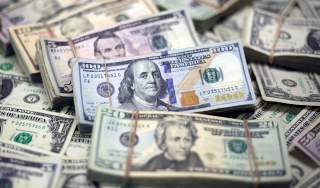New Fed Chairman, New Problems
The Fed appears willing to allow inflation pressures and growth to head higher without combating them with too many rate hikes.
Jerome Powell has yet to oversee his first Federal Open Market Committee (FOMC) meeting as the newly minted chair of the Federal Reserve. But he may already have been backed into a corner.
It is not often that the Federal Reserve’s FOMC minutes pique much interest. Typically, they simply elaborate the Fed’s outlook for policy and the reasoning behind it with little incremental information. That probably should have been the case with the latest minutes, but it was not. Instead, immediately following the release, the dollar, equities and the yield on government bond went on a wild ride.
The question is why? And does it really matter? The answer is the “Powell Pact”—the awkward deal between the Fed and markets. Powell did not choose to be a part of it, but it is his to own now.
Some background is useful to understanding precisely what we are talking about here. The Fed has struggled to increase inflation to its 2 percent target sustainably most of the recovery. Oddly, a rather vocal segment of the financial media is declaring the Fed to be behind the curve in staving off a massive, sharp increase in inflation. Those headlines get clicks, but are not grounded in reality.
Make no mistake, there is inflation pressure, and—over time—it should approach the Fed’s 2 percent target. But it is not there yet, and it is difficult to understand how sub-2 percent inflation could be “runaway,” requiring more and faster Fed funds interest rate hikes. The argument of rampant inflation does not pass muster.
So why did the minutes matter? Simply, the details that emerged told markets a couple unexpected things.
Surprisingly, the minutes were dovish. The FOMC appears to be leaning toward inflation risks being tilted to the downside. One of the more intriguing points was the assessment that a quicker pace of growth in 2018 is only a temporary phenomenon. In other words, 2018 growth is “transitory,” which is Fed speak for ignorable and not something that necessarily needs to be taken into consideration when determining monetary policy.
Once the market began to digest what this means, longer-term U.S. yields rose, the U.S. dollar rose and equities fell. On the surface, this does not make much sense: s dovish Fed does not have the consequence of a stronger dollar and higher long yields. Since when does that happen?
It makes sense though. The Fed is sanguine about inflation pressures, and this means it will allow inflation to pick up—hence the higher long-term bond yields. Meanwhile, by not indicating a faster pace of rate hikes, shorter-term rates had no reason to move—the market already has three hikes priced in for 2018. The “steepening of the yield curve” (stable short-term rates, higher longer-term rates) led to a stronger dollar. The combination of the two caused equities to be sold. At least, that seems to be the most reasonable narrative for the reaction.
All of this leads to the two most interesting outcomes from the minutes. First, the new leader of the Fed, Powell, seems to have been backed into a bit of a corner. With more worries about weaker inflation than overshooting inflation, the three hikes currently baked in for 2018 is the most his Fed is capable of undertaking without a tremendous shift in their communications.
Further, the projection of 2018 as a one-off growth event might cause the Fed to treat 2018 as a “transitory” period. This leads the accelerating pace of growth to be discounted, as policy makers “look-through” to 2019. This is similar to its stance on inflation in 2017.
All of this is positive for the European Central Bank's ability to peel away some of its accommodation. Why? Because the Fed is not going to aggressively raise rates to quell inflation. Instead, the ECB will enjoy some leeway in being able to remove accommodation without worrying about an overly aggressive Fed policy.
The combination of these two is the “Powell Pact,” whether he like it or not. The Fed appears willing to allow inflation pressures and growth to head higher without combating them with too many rate hikes, therefore allowing inflation pressures to build and allowing the ECB to begin removing some accommodation without too much risk. Welcome to the Fed, Powell.
Samuel E. Rines is the chief economist at Avalon Advisors in Houston, Texas.
Image: Reuters
Recommended:
Why North Korea's Air Force is Total Junk

